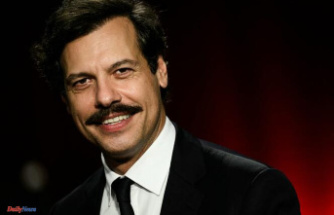Unlike literature, film has to use its bag of tricks to make it possible to experience what is going on in the heads of its characters. Goethe already wrote about the “proud light” that it “sticks to the body”. Of course, the poet had no idea how a camera works. However, the directors hardly get beyond his insight.
Like David Lynch, they can film nightmares or examine things until their outlines become blurred. Like Terrence Malick, they can tilt the world so that viewers are swept around as if on stormy waves. Like Ingmar Bergman, they can drape symbols in the smallest of spaces until their meaning dawns on the last person. Ever since film has had sound, dialogue has competed with images. That is why he appeared to many early filmmakers as an inadmissible shortcut to successful interpretation, as the hostile agent of a foreign power.
More than any other film nation, the dilemma has become second nature to the Japanese. They have always appreciated silence and let carefully composed images speak for themselves instead of words. The woodcuts of the 19th century such as Hokusai's "Great Wave off Kanagawa" bear witness to this, as do the staged views of Japanese gardens. In the elegant 1933 essay In Praise of the Shadow, writer Junichiro Tanizaki attempted to anecdotally capture his country's aesthetics. The Japanese, it says, speak most eloquently when they remain silent.
Director Kiyoshi Kurosawa's films express this sensitivity in ever new ways. He rose to fame around the turn of the millennium with two masterpieces of subtle horror, Cure (1997) and Pulse (2001). In the first, a man suffering from amnesia commits horrific murders, is always discovered near the scene of the crime and has no memory of anything. Oscar-winner and Parasite director Bong Joon-ho ranks Cure among the greatest films of all time, emphasizing the tremendous influence it has on his own work. In "Pulse" people, rendered speechless by social isolation, disappear into the cold purgatory of the early internet. Only their hissing, sizzling avatars remain.
Kurosawa's new film "To the Ends of the Earth", which was shown in Locarno in 2019 and is only now being released in cinemas due to the pandemic, also indulges in the greatest possible silence - at least where real feelings are important. Young reporter Yoko, played by J-Pop star Atsuko Maeda, babbles happily as soon as the TV camera rolls. Every word is a lie. She raves about the food in Uzbekistan, where the TV crew has gone to celebrate 25 years of Japan-Uzbek relations. The rice dish Plov, which she has to try telegen, is only half-cooked because there is no firewood in the kitchen. The mythical fish Bramul, which she promises to catch in the huge Aydar Lake, which was created unintentionally as a result of Soviet misplanning, never shows up.
In a joyless amusement park, she throws up after a swinging swing torture that is repeated three times for supposedly better pictures. She wipes her lips and, with artificial enthusiasm, praises the experience for the home crowd. Once, in the bustling bazaar of Tashkent, true passion gets the better of her. She promptly loses her film team and then, pursued by suspicious police officers, her hand-held camera. Shivering in the water under a bridge, she is eventually tracked down and taken to the police station - where she only trembles with unexplained fear, not speaking.
Why did Yoko run away anyway? Why doesn't she get a word out as soon as the cameras stop? Why does she awkwardly cling to the walls in dark underpasses? Why does her boyfriend, a Tokyo firefighter who remains as disembodied as the elusive fish, never respond to her text messages, which she frantically types into her cell phone every night before falling into restless dreams, fully dressed?
Kurosawa remains silent. He limits himself to discreetly hurrying after this strange young woman, who takes every flight of stairs at a run, as if she were on the run. Once she has the idea of rescuing a billy goat from its desolate enclosure and letting it roam the vastness of the country. The locals shake their heads; they know stray dogs will get on him.
The fable of the goat is clearly about Yoko herself. For some reason that may lie somewhere in the tension between her character and the expectations of those around her, she feels trapped. Their erratic wanderings lead them to the Navoi Theater, which was once beautifully decorated by Japanese prisoners of war. In a waking dream - a rare trick to show the interior of her psyche - she mounts the stage and sings Edith Piaf's "Hymn to Love". When the song fades away, the images take over again. And if you hadn't understood it long ago, you would now understand that this film, which has long banished you into its calm rhythm, doesn't speak itself, but sings.












